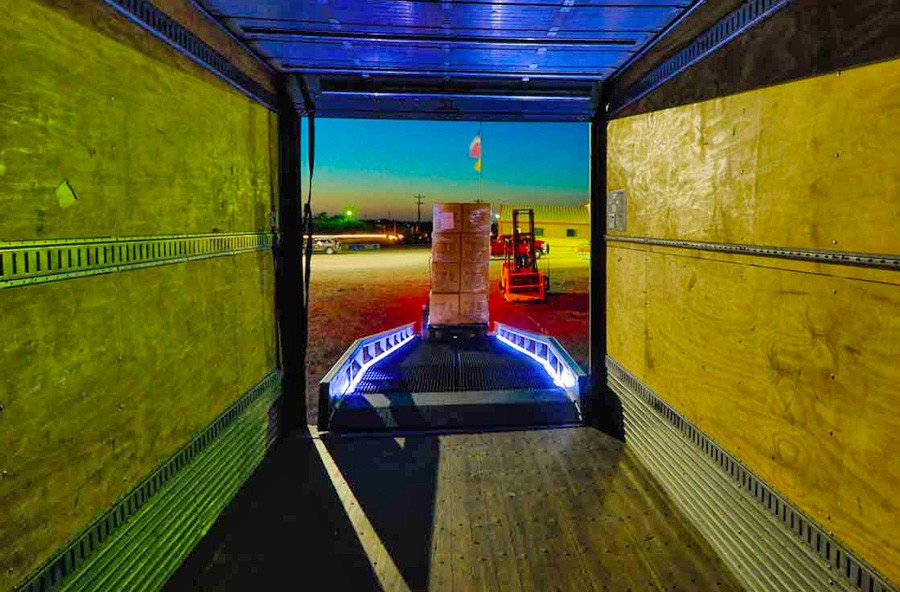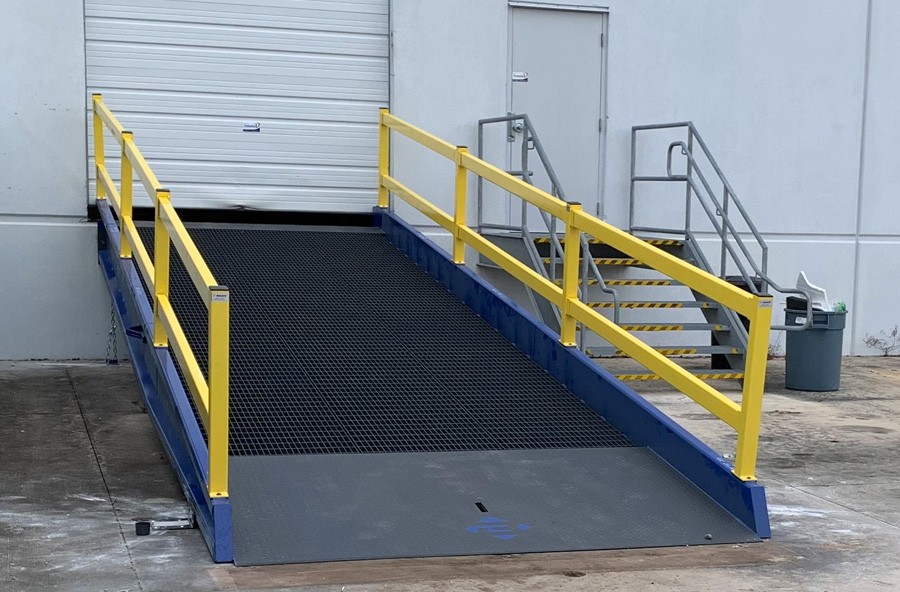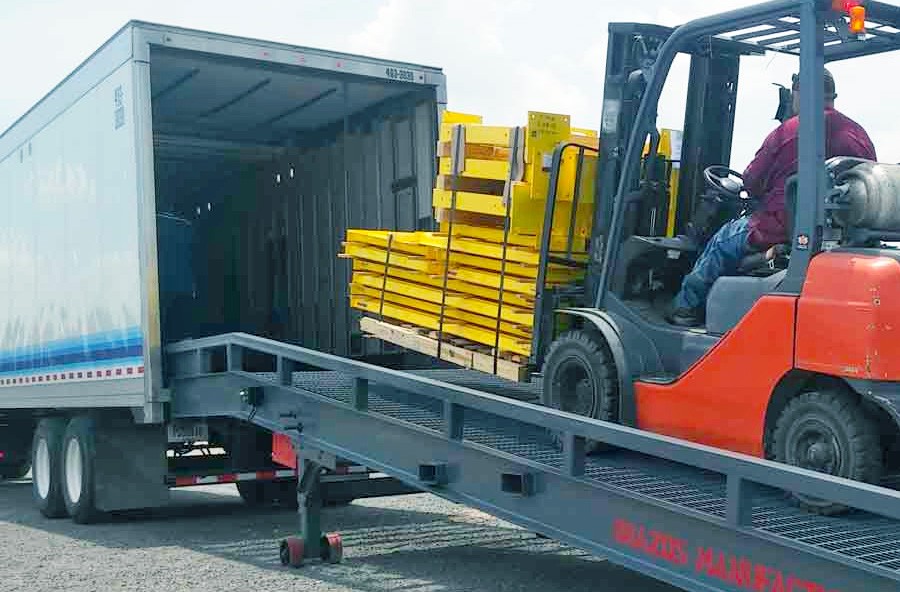Solving Your Loading Dock Issues With A Yard Ramp
If your business model is – or becomes – based on loading and unloading trailers, but you don't have traditional loading docks at your material handling, distribution center warehouse or manufacturing facility, a yard ramp might be the answer. Yard ramps are employed to take the place of normal warehouse docks or to act as a permanent or movable egress into and out of a warehouse dock.
Yard ramps can be portable or fixed and have several applications, including:
- Moving a forklift into and out of a trailer for easier and quicker product handling
- Moving heavy equipment into and out of a trailer for transport
- Moving material handling equipment from warehouse to yard and vice versa
- Loading and unloading equipment and product in crowded areas
Portable yard ramps come with wheels and can be moved around in your yard to be positioned where you need them to handle a task. Fixed yard ramps generally are bolted to the pavement and positioned at a dock. Stationary yard ramps are movable but designed to remain in one place most of the time.
The Nuts & Bolts of Standard Portable Yard Ramps
Usually built of heavy-duty steel, standard portable yard ramps come in a variety of styles to accommodate your unique material handling or distribution center warehouse challenges. Wheels are normally pneumatic or steel. Side railings and curbs help keep equipment moving up and down in a controlled and safe way, while aprons and levels on either end control movement and fluidity of loading and unloading product crates and pallets. Yard ramps can be custom built for your specific needs including the width and length.
Choosing the right level off length is an important safety feature for forklift operators. The level off allows the forklift to "level" at the top of the ramp, granting the operator an unimpeded line of sight. Most yard ramps have a 6-foot level off, but some go as high as 8-feet. The appropriate apron at the bottom of the ramp will help forestall damage to your equipment, as well as your product.
Portable yard ramps can be raised and lowered with a manual or hydraulic crank. Your decision on what type of crank will most likely be driven by finances, but keep in mind that if you are going to be using your yard ramp constantly, a hand-crank will not only slow down your employees – and affect productivity – but may also contribute to accidents and injuries.
Front safety legs – or at the very least jacks – should be a serious consideration for the safe operation of your yard ramp. Yard ramps are designed to be lifted above the lip of whatever they will rest on and then lowered to be flush. However, if the yard ramp is resting on the inside of a trailer and the chaining to the trailer moves, the yard ramp can fall to the ground without some stabilizing and secure feature.Choosing the Perfect Yard Ramp
At Southwest Materials Handling Company, our experienced staff can help you decide what features and specifications you need when choosing the perfect yard ramp for your business. Here are some factors to take into consideration.
Yard Ramp Specifics
When thinking about the size of your yard ramp, the first thing to consider is weight capability. The general rule of thumb is to triple your normal forklift load capacity. Yard ramps cover the gamut from minor weight to more than 100,000 lbs. This is obviously going to be a situation where you will want to overestimate – rather than be caught short in the middle of trying to unload equipment or product.
Next, you'll want to make sure your yard ramp is wide enough to handle your forklift. Most forklifts require from 48-inches to 86-inches. Will you be using your yard ramp to access trailers or docks or both? All of these things should be taken into consideration when choosing a yard ramp. As with weight, consider the widest piece of equipment you may conceivably be using.
Many people prefer their yard ramp grating to be serrated, allowing for a better traction, as well as letting snow, rain and other debris fall through rather than collect and hamper efforts or compromise safety. Because trailer heights are not standard, the height of your yard ramp will depend on your needs. Most yard ramps raise up to 4-feet, but they can be built for higher levels when necessary. The ramp incline is generally going to be safest and most efficient at 10 percent, while the ramp length is somewhat dependent on the dock or truck height, as well as whether or not it's straight or has a level up feature.
Yard ramps are generally moved by towing with a special forklift attachment.
Yard Ramp Applications
You'll find yard ramps in use in a wide variety of industrial applications. Sometimes, business location plays a part - for example if a business is located in a crowded, well-traveled place, using a movable ramp to load and unload trucks is the only option when there is no room for permanent ramps or a warehouse with a dock.
Yard ramps also work well in situations where any type of heavy equipment must be loaded and unloaded from a flatbed trailer. Another great use of yard ramps is during the busy season, when trucks are constantly at the dock doors and others are waiting to be unloaded in the yard. Construction companies and those who handle seriously heavy loads also use yard ramps. At Southwest Materials Handling, we have a selection of yard ramps available for rent for those busy times.
As Always, Safety First
Yard ramps can help increase your efficiency and productivity when you need a solution for your business. But as with any endeavor that involves equipment and machinery, there are guidelines for making sure that everyone involved goes home uninjured at the end of the shift. OSHA has a list of suggestions to make sure safety is observed when using a forklift on a ramp.
At Southwest Materials Handling Company, we carry Bluff and Brazos yard ramps. Our experienced staff is ready to help you choose the best yard ramp for your application. Contact us today to find out more.
When you subscribe to the blog, we will send you an e-mail when there are new updates on the site so you wouldn't miss them.




Comments